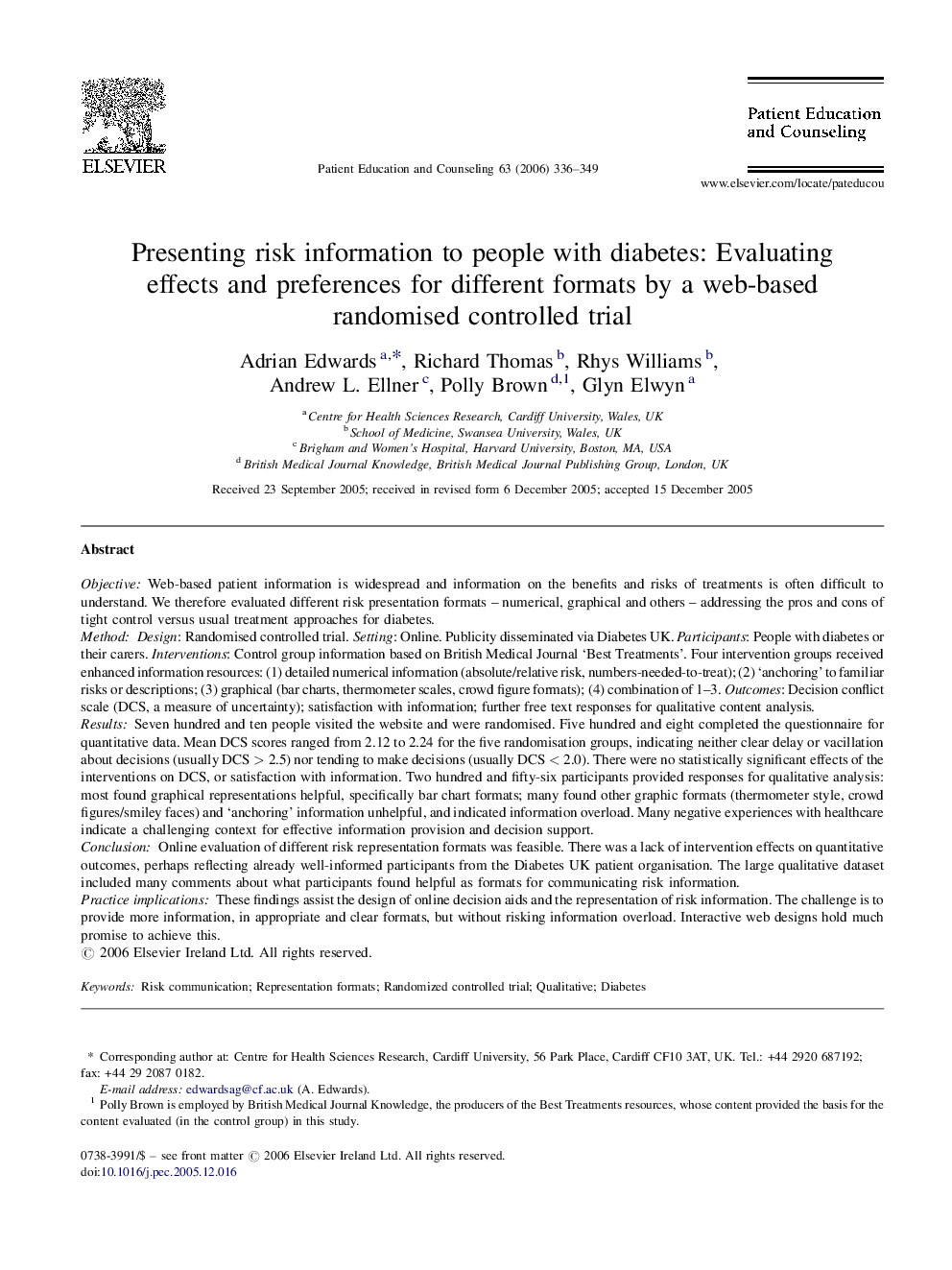| کد مقاله | کد نشریه | سال انتشار | مقاله انگلیسی | نسخه تمام متن |
|---|---|---|---|---|
| 3816086 | 1246135 | 2006 | 14 صفحه PDF | دانلود رایگان |

ObjectiveWeb-based patient information is widespread and information on the benefits and risks of treatments is often difficult to understand. We therefore evaluated different risk presentation formats – numerical, graphical and others – addressing the pros and cons of tight control versus usual treatment approaches for diabetes.MethodDesign: Randomised controlled trial. Setting: Online. Publicity disseminated via Diabetes UK. Participants: People with diabetes or their carers. Interventions: Control group information based on British Medical Journal ‘Best Treatments’. Four intervention groups received enhanced information resources: (1) detailed numerical information (absolute/relative risk, numbers-needed-to-treat); (2) ‘anchoring’ to familiar risks or descriptions; (3) graphical (bar charts, thermometer scales, crowd figure formats); (4) combination of 1–3. Outcomes: Decision conflict scale (DCS, a measure of uncertainty); satisfaction with information; further free text responses for qualitative content analysis.ResultsSeven hundred and ten people visited the website and were randomised. Five hundred and eight completed the questionnaire for quantitative data. Mean DCS scores ranged from 2.12 to 2.24 for the five randomisation groups, indicating neither clear delay or vacillation about decisions (usually DCS > 2.5) nor tending to make decisions (usually DCS < 2.0). There were no statistically significant effects of the interventions on DCS, or satisfaction with information. Two hundred and fifty-six participants provided responses for qualitative analysis: most found graphical representations helpful, specifically bar chart formats; many found other graphic formats (thermometer style, crowd figures/smiley faces) and ‘anchoring’ information unhelpful, and indicated information overload. Many negative experiences with healthcare indicate a challenging context for effective information provision and decision support.ConclusionOnline evaluation of different risk representation formats was feasible. There was a lack of intervention effects on quantitative outcomes, perhaps reflecting already well-informed participants from the Diabetes UK patient organisation. The large qualitative dataset included many comments about what participants found helpful as formats for communicating risk information.Practice implicationsThese findings assist the design of online decision aids and the representation of risk information. The challenge is to provide more information, in appropriate and clear formats, but without risking information overload. Interactive web designs hold much promise to achieve this.
Journal: Patient Education and Counseling - Volume 63, Issue 3, November 2006, Pages 336–349